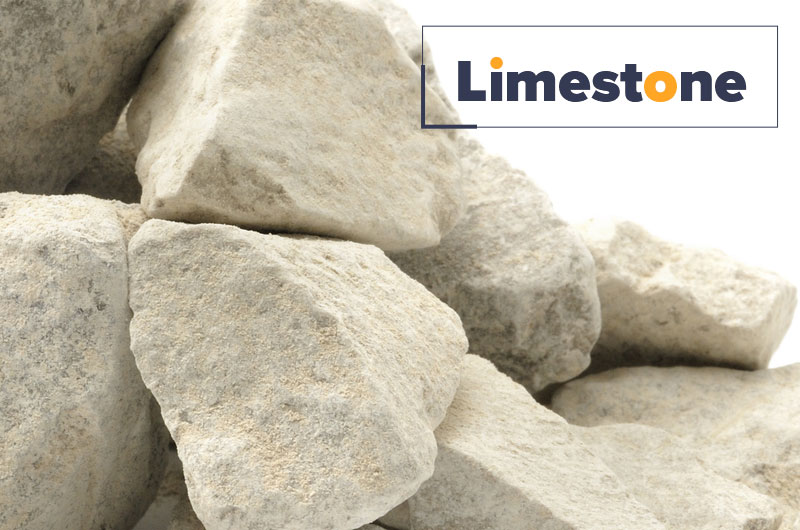What is Limestone?
Limestone is a sedimentary rock primarily composed of calcium carbonate (CaCO₃) in the form of the mineral calcite. It often contains traces of other minerals such as quartz, feldspar, clay, and organic remains like shells or fossils. Limestone forms in marine environments through the accumulation of coral, shell fragments, and other calcium-rich materials, or through the precipitation of calcium carbonate from water.
Properties of Limestone
- Chemical Composition: Mainly calcium carbonate (CaCO₃).
- Appearance: Typically white, gray, or tan, but can vary depending on impurities.
- Texture: Fine-grained to coarse-grained.
- Hardness: Moderately hard, typically 3-4 on the Mohs scale.
- Reactivity: Reacts with acids, releasing carbon dioxide.
Benefits of Limestone
1. Abundance and Accessibility
- Limestone is widely available and relatively inexpensive, making it a cost-effective material for various applications.
2. Versatility
- It is used in diverse industries, including construction, agriculture, and manufacturing, due to its physical and chemical properties.
3. Environmental Benefits
- Limestone can neutralize acidic soils and water, making it beneficial for environmental conservation.
4. Strength and Durability
- Limestone is durable, making it ideal for construction projects like buildings, roads, and monuments.
Uses of Limestone
1. Construction Material
- Building Blocks: Used as a primary building material in historical and modern architecture.
- Cement Production: An essential ingredient in Portland cement, used in concrete.
- Road Base: Crushed limestone is used as a base for roads and highways.
2. Agriculture
- Soil Amendment: Used to neutralize acidic soils and improve fertility.
- Livestock Feed: Added as a calcium supplement for animal feed.
3. Industrial Applications
- Steel Manufacturing: Acts as a flux to remove impurities during steel production.
- Glass Production: Used as a raw material in glassmaking.
- Chemical Industry: Used to produce lime (CaO), which has applications in water treatment and paper manufacturing.
4. Environmental Uses
- Water Treatment: Used to treat wastewater by neutralizing acidity and removing impurities.
- Flue Gas Desulfurization: Reduces sulfur dioxide emissions in power plants.
5. Decorative Uses
- Sculptures and Monuments: Valued for its aesthetic appeal and ease of carving.
- Flooring and Tiles: Used for its natural beauty in interior design.
Conclusion
Limestone is a versatile and widely used material with applications spanning construction, agriculture, industry, and environmental management. Its availability, durability, and chemical properties make it an indispensable resource in both traditional and modern industries.


